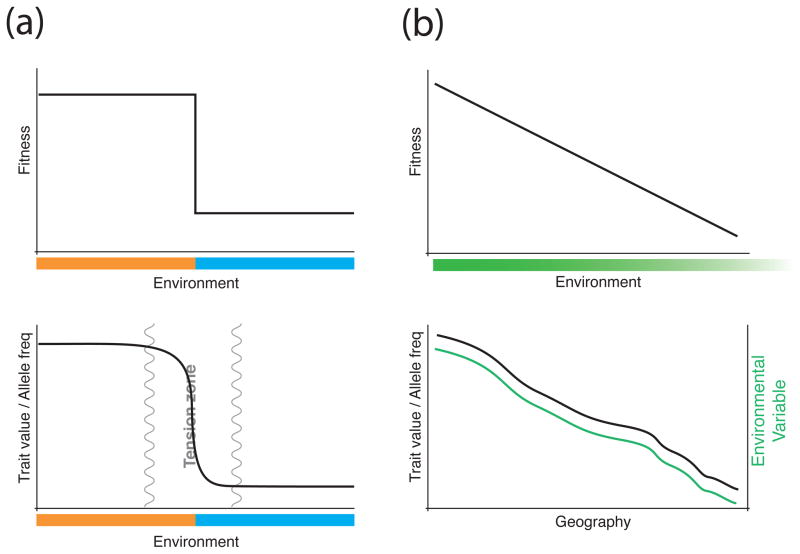Figure I.
A simplified fitness landscape contrasting discrete- and continuous-environment clines, as well as their expected shapes. A) In discrete-environment clines, the fitness landscape (top; pattern shown for the orange population, blue population would be a mirror image) is often represented by a step function with two fitness optima, where alleles from one species are selected against as they introgress away from their home population. Consequently, the slope of the resulting trait/allele frequency cline (bottom) is relatively shallow in the tails and transitions sharply through the tension zone, though the exact shape is dependent on the strength of selection and dispersal distance. B) The fitness landscape of a continuous-environment cline (top; pattern shown for leftmost population) represents a shifting fitness optimum along a continuous environmental gradient. The resulting trait/allele frequency cline (bottom, black line) may be less steep than a discrete-environment cline and should closely track the environmental selection pressure (green line).

